|
 The gardener behind this array, Richard Smith,
says that every year people drive buy and check out the flowers.
Some stop and visit if he is out in the yard, which he is most of
the time. They wander among the flowers and ask about different
plants. What seems to surprise people the most he says is when he
tells them that 90 percent of what they are seeing are annuals that
die out when cold weather arrives, and about 90 percent of those
annuals are grown from seed by Smith. The gardener behind this array, Richard Smith,
says that every year people drive buy and check out the flowers.
Some stop and visit if he is out in the yard, which he is most of
the time. They wander among the flowers and ask about different
plants. What seems to surprise people the most he says is when he
tells them that 90 percent of what they are seeing are annuals that
die out when cold weather arrives, and about 90 percent of those
annuals are grown from seed by Smith.
Frankly, he says that if he was buying plants each year, there is no
way he would be able to afford to have this many. But because he
enjoys growing plants, and has space to do his own seeding and grow
rooms, he saves a lot of money by starting with seeds in February
and March and growing healthy plants to set out when the weather
warms up.
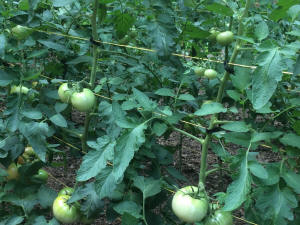
He also does this with vegetables such as his tomatoes and peppers.
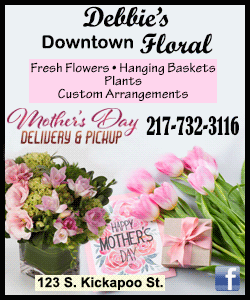
If readers are interested in giving this a try. Smith says it takes
time, and when just starting out a little more cash, but as you
accumulate some of the equipment needed, it gets to the point when
all one needs to purchase is good potting mix, a soluble fertilizer
and garden seed.
The first piece of equipment needed are the growing trays. Smith
buys the kits and uses them year after year. The kit consists of
three layers. The bottom layer is the water reservoir tray, then
comes the seed tray, and finally the clear plastic dome. Of these
three layers, the reservoir trays will from time to time spring
leaks, but those trays can be purchased individually at local stores
such as Ace Hardware in Lincoln. The other two layers donít break
that often, provided they are taken care of and properly stored when
not in use.
Another necessary piece of equipment is the grow light. Many will
tell you that to get plants to grow, you need to purchase those
special plant lights that emit a purple-pinkish light. If one is
growing something like an African violet that is probably the best
way to go. But for starting garden seeds, Smith uses a simple
four-foot shop light with regular florescent bulbs. The shop light
fixtures are often on sale at local stores such as Farm and Home,
Ace Hardware and even Wal-Mart. The standard fluorescent bulbs are
much cheaper than the colored grow lights and are also often offered
on sale at these stores.
Smith says that the key to growing seeds is to have a light and warm
environment. Each year he commandeers a spare bedroom and sets up
his growing room with a table with lights hanging about three inches
above the trays to start. He adds extra heat to the room by using
one of those oil filled radiant electric heaters, and sets the
lights on timers so they are on 16 hours a day and switch off on
their own.

When it comes time to plant the seeds, Smith purchases a good
quality potting mix. His favorite is the Miracle Grow potting mix in
the green and yellow bag. He says he doesnít spend the extra money
on seed starting mixes or the high moisture mixes because heís going
to be feeding and watering his seeds when needed, and doesnít mind
the extra effort to do those tasks rather than let a soil mix do it
for him.
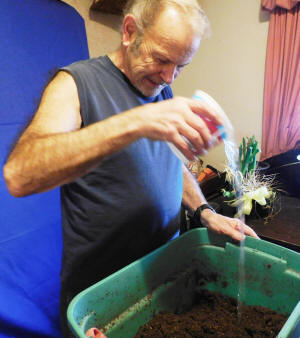

About two days before heís ready to plant seeds, he dumps his mix
into a large plastic tub. He uses the storage tubs with a locking
lid that are readily available at stores like Wal-Mart and often
offered on sale during the late part of the year. These are
re-useable year after year, so this is not a recurring expense.

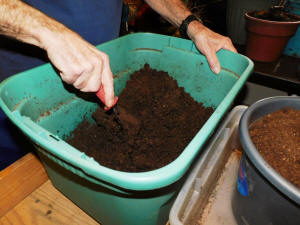
He douses the soil in the tub with water, gives it a good stir and
puts the lid on. He leaves the potting mix undisturbed for a couple
of days, allowing it to fully absorb the moisture he has given it.
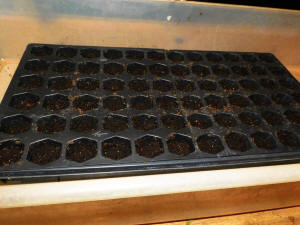
On planting day, he fills each well in his seed tray about half-full
of soil and applies gentle pressure to pack it down a bit. This is
something one will learn by doing. Pack the soil a little bit but
donít mush in down into the cups, you want the roots to grow easily
through the mix so be gentle.
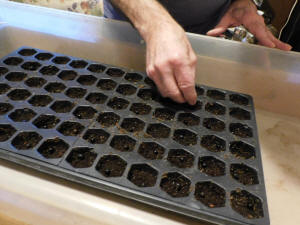
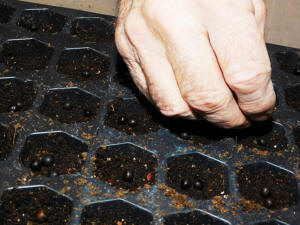


Next he places his seeds in each of the wells. He covers the seeds
with more potting mix, but does not pack it down at all. He keeps
that soil light and loose so the seed will sprout through without
breaking its neck or stem.
[to top of second column] |


He uses a simple wooden ruler to scrape off the
excess, then adds plain water to the reservoir tray, puts on the
clear plastic dome and takes the tray to live under the lights until
the seeds are well sprouted.


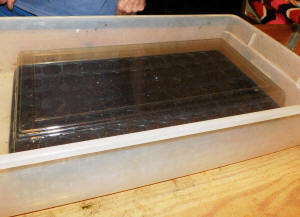
The clear plastic dome keeps the humidity inside the
growing area.

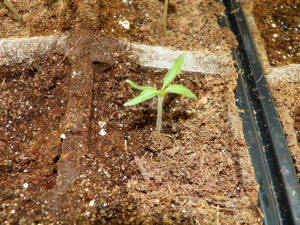
When the seeds are well sprouted that is no longer needed and is
removed so plants can grow to greater height before being
transplanted into individual pots. Smith doesnít spend a lot of
money on the larger pots. Using something that is four to six
inches, he has a collection of cottage cheese containers that he
uses and he says that some of those folks who stop to visit the
garden each year, bring him pots that he uses over and over again.
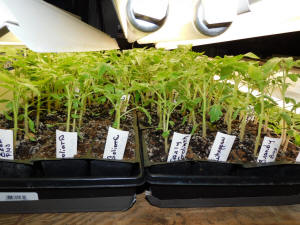
Another tool that is needed each year are plant tags. Smith grows a
variety of similar plants, such as four or five types of tomato
plant. As they sprout they all look alike so identify his varieties
is very important. But, he doesnít waste the extra money genuine
plant tags. Instead he uses mini blinds. He finds old ones at stores
such as Good Will and Pink Shutter and cuts them into five or six
inch sticks. He writes the plant variety on the stick with a Sharpie
and puts it in the tray.
As the seeds sprout and become hardy, Smith transplants them into
larger pots and if the weather is cooperating, he moves them outside
to his greenhouses.


Smith has three portable greenhouses that he has purchased over the
years at, of all places, Aldiís in Lincoln. The store has in the
past offered the greenhouses on sale for about $20 each and heís
bought them one at a time.
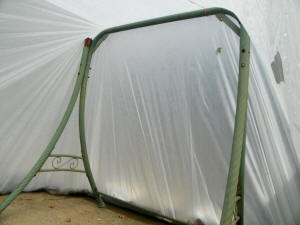
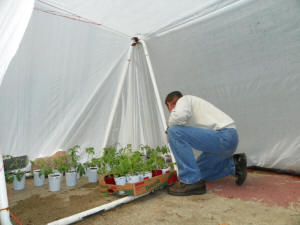
He has also over the years collected some swing frames. He lines
those up in a sunny spot in the back yard, covers them with 3mil
clear plastic and that becomes the greenhouse for the larger plants
such as his tomatoes. The frames heís gotten for next to nothing or
even free from folks he knows who are wanting to get rid of them.
The plastic he buys at local stores such as Ace, Farm and Home or
Wal-Mart. He saves the plastic when he tears down the greenhouse and
uses it multiple years.

Now, there is no denying that Smith puts a lot of time into growing
his plants from seed. Heís one who enjoys staying active and for him
nothing he does is work. That may not be for everyone. However, if
you feel inclined to do so, consider this, buying plants for a
flower garden like Smithís would cost about $2,000 a year. He grows
his plants from seed for a fraction of that amount.
He also harvests seeds from the plants he grows and saves them for
seeding the next spring, which saves him a lot of money and allows
him to know exactly what heís getting when that seed grows. But that
is a story for another day.
So, if you are interested in giving this a try, what would Smith
tell you? Start small, be ready to invest a little bit of money that
first year, and be ready to spend some time taking care of your
plants. And, most importantly, if you enjoy it, keep it up, if you
donít then let it go.
Smith loves to garden, has time to do it, and enjoys the visits he
gets from folks during the summer, so for him the value of doing it
himself has much less to do with money and much more to do with
personal satisfaction. Perhaps that is why heís so good at it.
|